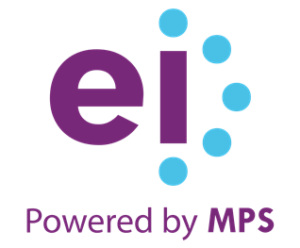Smarter Training For More Secure Skies
Safety and security is the lifeblood of aviation. Airlines and provider today encounter a complicated internet of governing, technological, and functional obstacles. Training is the cornerstone that maintains crews, guests, and possessions secure, yet too often it is fragmented, reactive, and inconsistent.
Current incidents, from tragic crashes connected to fuel system mistakes to wheel detachments that forced emergency touchdowns, and near-misses caused by fire events and drone attacks, highlight the stakes. Compliance alone is no more enough. The industry requires smarter, extra durable knowing strategies.
Why Aeronautics Requirements A Smarter Discovering Technique
Regulative Intricacy
Aviation authorities continue to tighten oversight. In the United States, the FAA has actually been singing about tiredness monitoring and duty-hour limitations. European regulators are focused on path security and occurrence reporting standards. In The Center East, local centers are under increasing pressure to maintain conformity across huge, quickly increasing fleets. Lining up training with these different needs is a significant challenge.
Safety-Critical Precision
Fatigue-related mistakes, upkeep oversights, and runway attacks stay consistent dangers. With the expense of error so high, training has to go beyond understanding checks to scenario-based method that builds real-world preparedness.
Technology Change
AI-enabled web traffic systems, electronic doubles, and advanced aircraft innovations are reshaping functions throughout flight and ground procedures. Without agile upskilling, staffs may discover themselves underprepared for the really systems they should run safely.
Functional Performance Pressure
Limited turnaround schedules at active European hubs or Center Eastern transportation points leave little time for extensive training. Airlines need modular, workflow-friendly solutions that reduce downtime without compromising rigor.
Emerging Danger Categories
From drone attacks in conflict-adjacent zones to cyberthreats targeting navigation systems, the aviation risk landscape is broadening. Training methods need to progress as rapidly as these dangers.
Usual Training Demands In Aviation
Security Training
Safety is the nonnegotiable foundation of aviation. Programs have to cover both core and advanced methods, ranging from emergency treatments and discharge drills to situational awareness and incident coverage.
Regulatory And Conformity Training
Required training courses aligned with FAA, EASA, ICAO, and regional authorities. These consist of reoccurring training on duty-hour restrictions, devices checks, and handling hazardous materials.
Maintenance And Design Training
Hands-on simulations and refresher courses that assist engineers and professionals determine part fatigue, follow assessment methods, and stop oversights.
Security And Airspace Safety
With drone attacks and regional conflicts affecting worldwide airspace, specialized training is essential. Middle Eastern providers, particularly, face expanding demands to address these dangers in fast-expanding procedures.
Modern Technology And Systems Training
Upskilling staff on next-generation airplane systems, AI-enabled web traffic tools, and digital systems that support effectiveness across US and global paths.
Soft Abilities And Traveler Experience
Cabin staff and ground team benefit from training in interaction, problem management, and social sensitivity, making certain guest trust and solution uniformity across global centers.
The Path Forward
In aeronautics, conformity is mandatory, yet constructing a society of safety and preparedness is what genuinely establishes resistant companies apart. By buying targeted, role-specific training that deals with security, conformity, tiredness, upkeep, technology, and guest experience, leaders can make certain uniformity and self-confidence throughout their workforce.
Whether browsing regulatory needs in the United States, managing complex hub operations in Europe, or scaling fleets in the center East, the mandate is clear: training needs to evolve to match the pace of adjustment overhead.
The concern is no more whether to modernize air travel training. It is just how rapidly leaders can act to protect both people and performance.
Learn more:
FREQUENTLY ASKED QUESTION
Due to the fact that aeronautics depends on rigorous adherence to safety and security procedures, continual training, and error-free procedures. Without safety and security, the entire system is at risk.
Smarter techniques like flexible training, scenario-based understanding, and simulations ensure employees find out relevant abilities, use them in real-world contexts, and maintain vital security understanding.
Technologies such as Online Reality, AI-driven personalization, and mobile knowing give immersive, flexible, and reliable means to train aviation experts.
They line up training material with global aviation criteria and guidelines, making it easier for companies to make sure conformity while likewise tracking and bookkeeping discovering results.
Pilots, crew, upkeep staff, air web traffic controllers, and ground employees all gain from targeted, role-specific training that decreases human error and improves safety and security.
The future points toward constant, technology-enabled discovering that adjusts to advancing policies, integrates data-driven insights, and cultivates a society of safety throughout the market.

EI
EI is an emotionally smart discovering experience style firm that companions with clients in their Digital Improvement trip.
www.eidesign.net